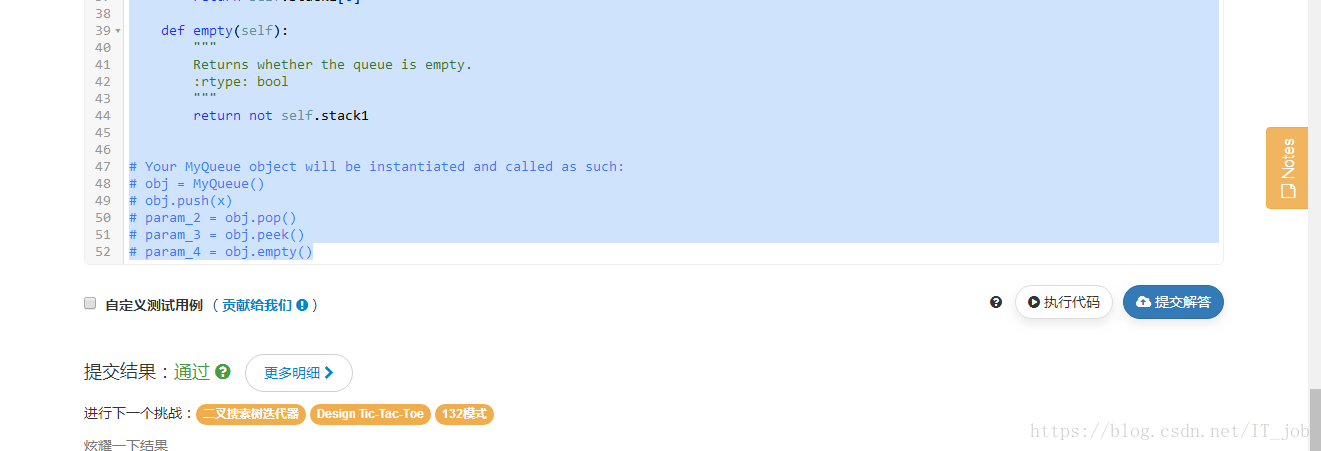使用栈实现队列的下列操作:
- push(x) -- 将一个元素放入队列的尾部。
- pop() -- 从队列首部移除元素。
- peek() -- 返回队列首部的元素。
- empty() -- 返回队列是否为空。
注意:
- 你只能使用标准的栈操作-- 也就是只有
push to top,peek/pop from top,size, 和is empty操作是合法的。 - 你所使用的语言也许不支持栈。你可以使用 list 或者 deque (双端队列) 来模拟一个栈,只要是标准的栈操作即可。
- 假设所有操作都是有效的 (例如,一个空的队列不会调用 pop 或者 peek 操作)。
class MyQueue(object):
def __init__(self):
"""
Initialize your data structure here.
"""
#列表(list)的功能与栈一样,stack1主要进出队列,stack2作中转
self.stack1=[]
self.stack2=[]
def push(self, x):
"""
Push element x to the back of queue.
:type x: int
:rtype: void
"""
self.stack1.append(x)
def pop(self):
"""
Removes the element from in front of queue and returns that element.
:rtype: int
"""
while self.stack1:
self.stack2.append(self.stack1.pop())#将stack1中的数据放入stack2中
res=self.stack2.pop()#弹出stack2的顶元素
while self.stack2:
self.stack1.append(self.stack2.pop())#将stack2中的数据放入stack1中
return res
def peek(self):
"""
Get the front element.
:rtype: int
"""
return self.stack1[0]
def empty(self):
"""
Returns whether the queue is empty.
:rtype: bool
"""
return not self.stack1
# Your MyQueue object will be instantiated and called as such:
# obj = MyQueue()
# obj.push(x)
# param_2 = obj.pop()
# param_3 = obj.peek()
# param_4 = obj.empty()








 本文介绍了一种使用两个栈模拟队列的方法,通过定义一个MyQueue类实现队列的基本操作:push、pop、peek和empty。文章详细展示了如何利用栈的特性来实现队列的先进先出原则。
本文介绍了一种使用两个栈模拟队列的方法,通过定义一个MyQueue类实现队列的基本操作:push、pop、peek和empty。文章详细展示了如何利用栈的特性来实现队列的先进先出原则。
















 1316
1316

 被折叠的 条评论
为什么被折叠?
被折叠的 条评论
为什么被折叠?








